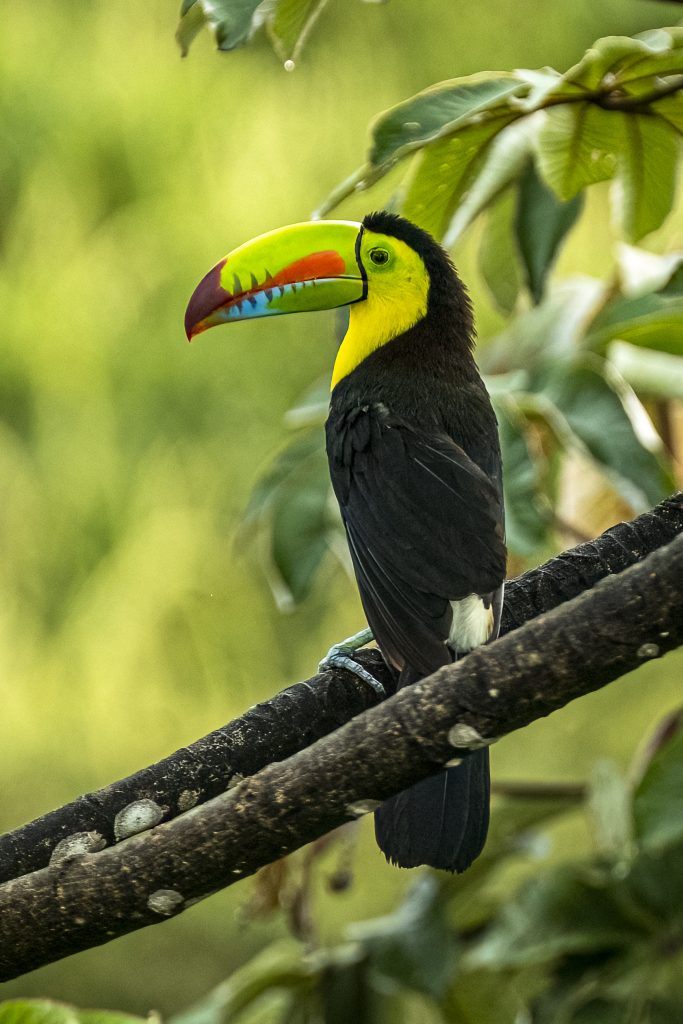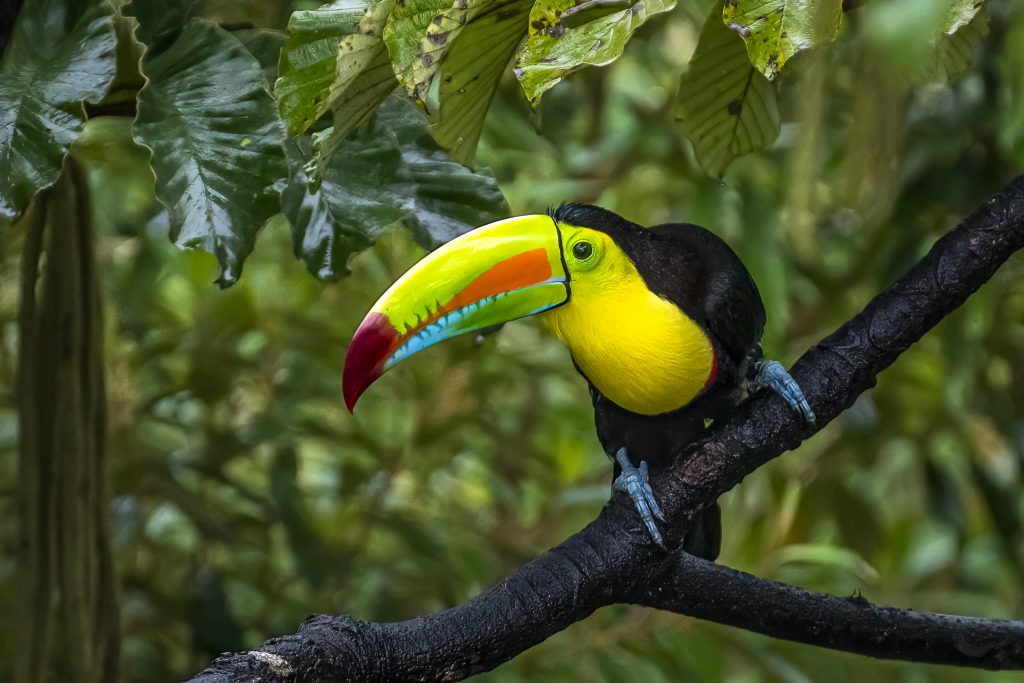Scientific Name and Classification
- Scientific Name: Ramphastos sulfuratus
- Family: Ramphastidae
- Order: Piciformes
Description
The keel-billed toucan is a medium-sized bird known for its vibrant, multi-colored bill. The bill, which can grow up to 20 cm (7.9 inches) long, is primarily yellow with patches of green, orange, and red. Despite its large size, the bill is lightweight due to its hollow structure. The bird’s plumage is primarily black with a yellow throat and chest, and it has blue feet and red feathers around the tail area. Keel-billed toucans typically measure about 42-55 cm (16.5-21.5 inches) in length and weigh around 380-500 grams (13.4-17.6 ounces).
Habitat
Keel-billed toucans inhabit the tropical and subtropical rainforests of Central and South America. Their range extends from southern Mexico through Belize, Guatemala, and into northern Colombia and Venezuela. They prefer lowland forests and are commonly found in the canopy, but they can also be seen in open woodlands and forest edges.
Behavior
- Diet: These toucans are primarily frugivorous, meaning their diet consists mainly of fruits. However, they are also known to eat insects, small reptiles, eggs, and occasionally small birds. Their long bills help them reach and manipulate fruit on branches that might otherwise be inaccessible.
- Social Structure: Keel-billed toucans are social birds, often seen in small flocks of about 6 to 12 individuals. They communicate with each other using a variety of vocalizations, including croaks and bill clacking.
- Breeding: The breeding season typically occurs from March to June. Keel-billed toucans nest in natural tree cavities or abandoned woodpecker holes. The female usually lays 2-4 eggs, and both parents take turns incubating them for about 15-20 days. The chicks are born naked and blind, relying completely on their parents for food and care.
Conservation Status
The keel-billed toucan is currently listed as “Least Concern” by the International Union for Conservation of Nature (IUCN). While their population is stable, they face threats from habitat destruction due to deforestation and human encroachment. Conservation efforts focus on preserving their natural habitats and raising awareness about the importance of tropical rainforests.
Interesting Facts
- The keel-billed toucan’s bill, despite its size, is surprisingly lightweight because it is made of keratin (the same material as human fingernails) and has a honeycomb-like structure inside.
- These birds play a crucial role in their ecosystem by helping to disperse seeds from the fruits they eat, thus contributing to forest regeneration.
- Toucans regulate their body temperature through their bill. By adjusting the blood flow to their bill, they can release excess heat.
Please bookmark us now press ctrl+d and visit again soon for more fascinating nature images! Here some recommended links selected for you: The Best Books of the Month, Todays best Deals at Amazon, Best Sellers in Cell Phones & Accessories and last but not least the easy and great way to send a gift for the holidays: Amazon.com eGift Card (Instant Email or Text Delivery).
A selection of Nature images, wildlife, flora and landscape stock photos, to see many more images and to license our stock photos please see our complete collection of our wildlife, flora and landscape stock images here at Alamy.
Introducing our captivating photo book showcasing the mesmerizing flora and fauna of Panama! Dive into the vibrant world of biodiversity with stunning imagery capturing the essence of Panama’s natural wonders. From majestic birds to elusive wildlife and breathtaking landscapes, this book is a visual feast for nature enthusiasts.
Don’t miss your chance to own a piece of Panama’s natural heritage. Order your copy here at Amazon now and embark on a visual journey through the enchanting landscapes and fascinating wildlife of Panama!

